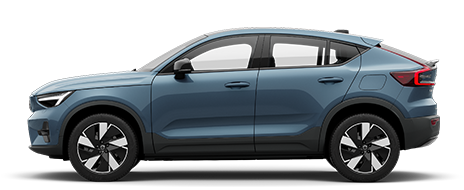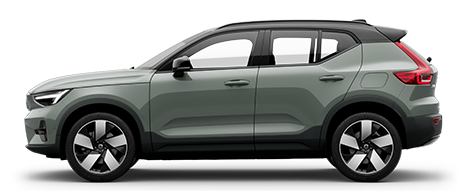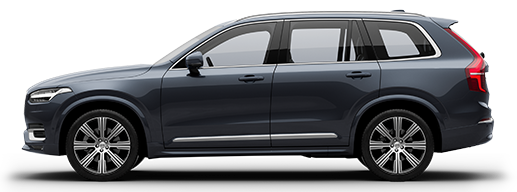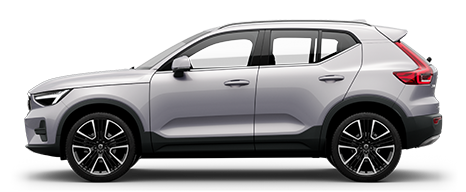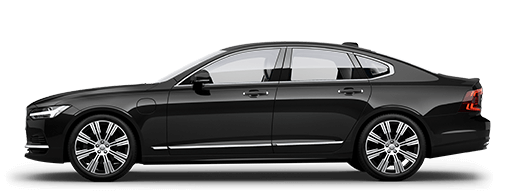Using jump starting with another battery
If the car's starter battery (12 V) is discharged then the car's electrical system can be started with current from another battery.
If the battery with a voltage of 12 V (starter battery) is discharged, the car's electrical system can be started by means of jump starting using jump leads and another car. If the hybrid battery is also discharged, it will need to be charged using a charging cable after starting the electrical system in order to be able to start the engine.
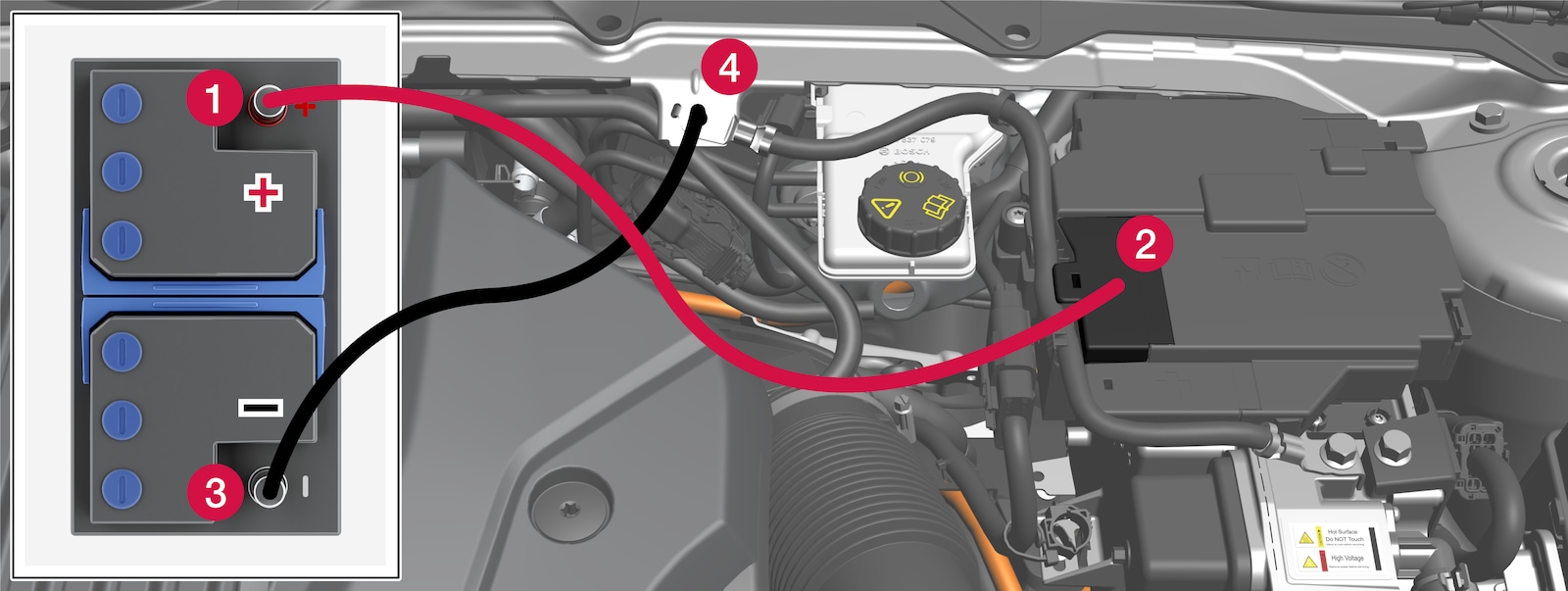
Important
If a fuse has been overloaded, the message 12 V Battery Fuse failure Service required is shown in the driver display. Volvo recommends that an authorised Volvo workshop is contacted.
When jump-starting the car, the following steps are recommended to avoid short circuits or other damage:
Important
Open the positive charging point's cover (2).
There are two connection points under the cover. Only use the connection point closest to the passenger compartment.
Note
Important
Note
Remove the jump leads in reverse order - first the black and then the red.
Make sure that none of the black jump lead's clamps comes into contact with the car's positive charging point, the donor battery's positive terminal, or the clamp connected to the red jump lead.
Warning
- The battery can generate oxyhydrogen gas, which is highly explosive. A spark can be formed if a jump lead is connected incorrectly, and this can be enough for the battery to explode.
- Do not connect the jump leads to any fuel system component or any moving part. Be careful of hot engine parts.
- The battery contains sulphuric acid, which can cause serious burns.
- If sulphuric acid comes into contact with eyes, skin or clothing, flush with large quantities of water. If acid splashes into the eyes - seek medical attention immediately.
- Never smoke near the battery.
